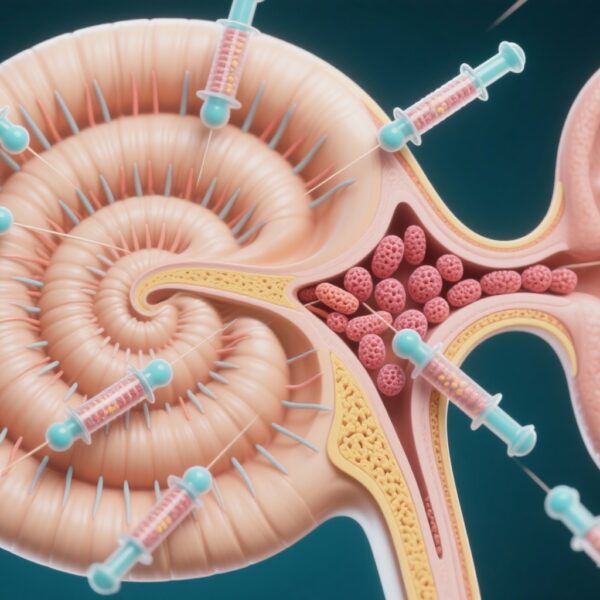Multiple myeloma (MM) is a malignant plasma cell disorder characterized by uncontrolled proliferation of abnormal plasma cells in the bone marrow, often accompanied by bone lesions, anemia, renal impairment, and immune dysfunction. It ranks as the second most common hematologic cancer globally, imposing a significant clinical and societal burden. Despite its relative rarity compared to other malignancies, MM historically carried a poor prognosis, with patients facing rapid disease progression and limited treatment options.
The story of multiple myeloma stretches back more than a century. It began with puzzling clinical findings and has evolved into a showcase of biomedical innovation and translational research, culminating in dramatic improvements in patient survival and quality of life. This article reviews the historical perspective, the scientific breakthroughs, and the new treatment frontiers that have reshaped MM care, emphasizing how the median overall survival for patients has doubled over the past 20 years.
Early History and Clinical Recognition
The earliest detailed descriptions of what would come to be recognized as multiple myeloma date back to 1844. British physician Samuel Solly documented a distressing case of a young woman plagued by severe bone pain, fractures, and loss of mobility. Post-mortem examination revealed soft, red material supplanting the spongy bone in her sternum and femur, which Solly termed “mollities ossium” (softening of the bones). This marked the inception of pathological recognition of MM-like conditions.
Subsequent reports, including one in 1873 by Russian doctor J. von Rusitzky, who found multiple discrete tumor lesions within bone marrow during autopsy, helped define the disease’s clinical and pathological identity. Notably, Rusitzky introduced the term “multiple myeloma” to describe the multifocal nature of these lesions.
Today, MM is understood as a malignant clonal plasma cell disease that significantly disrupts bone integrity and hematopoiesis. Abnormal plasma cells crowd the marrow, weaken bones causing fractures, produce dysfunctional immunoglobulins that impair kidney function, and progressively suppress normal immune responses, making patients vulnerable to infections.
Traditional Treatment and Early Challenges
For much of the 20th century, effective treatments for MM were scarce. In the 1950s, the median overall survival of patients was approximately six months, reflecting a dire prognosis. The 1960s witnessed the introduction of alkylating agents, particularly melphalan, ushering in the era of chemotherapy-based management for MM. While modest survival benefits were evident, long-term disease control remained elusive.
The 1980s brought a major advancement with the advent of high-dose melphalan chemotherapy combined with autologous stem cell transplantation (ASCT). This approach prolonged median progression-free survival to 4–5 years and became the standard first-line treatment for eligible patients. Yet, relapse was nearly universal, illustrating an unmet need for innovative therapies capable of durable disease control.
Breaking the Deadlock with Immunomodulatory Drugs: The Rise of Molecular Glues
The dawn of the 21st century heralded a breakthrough with the emergence of immunomodulatory drugs (IMiDs), epitomized by thalidomide’s reintroduction as a cancer therapy. Initially infamous as a teratogen in the 1950s, thalidomide’s anti-cancer potential was discovered several decades later.
The foundation for this renaissance was laid in 1971 by Harvard’s Judah Folkman, who hypothesized that angiogenesis inhibition could suppress tumor growth. This principle inspired laboratory research, including that by Robert D’Amato, who demonstrated thalidomide’s vascular growth-blocking effects and antitumor activity in animal MM models.
Combined with corticosteroids like dexamethasone, thalidomide showed promising clinical trial results and became the first FDA-approved IMiD for MM in the early 2000s. Mechanistically, IMiDs function as molecular glues — small molecules that bind specific cellular proteins and redirect the activity of ubiquitin E3 ligases to degrade oncoproteins, thus disrupting tumor survival and modifying the bone marrow microenvironment.
Building on this understanding, derivatives such as lenalidomide and pomalidomide were designed with enhanced efficacy and better safety profiles. Lenalidomide combined with dexamethasone can induce remission in up to 90% of newly diagnosed patients. Pomalidomide, approved in 2013 for relapsed/refractory MM (RRMM), represents the most potent third-generation IMiD and continues the legacy of molecular glue–based drug design.
Proteasome Inhibitors: A Serendipitous Discovery Changing Treatment Landscape
Concurrently, proteasome inhibitors emerged as another revolutionary drug class for MM. The proteasome is a cellular “waste disposal” complex that degrades misfolded or damaged proteins, maintaining cellular homeostasis. MM cells exhibit heightened dependence on proteasome activity due to their excessive protein production.
Scientifically, the groundwork was laid by Alfred L. Goldberg’s team in the 1980s, who characterized the proteasome’s role and potential as a therapeutic target. Drugs developed to inhibit proteasomes initially aimed to treat muscle wasting but were found to have robust anti-MM effects.
PS-341 (later named bortezomib) changed the trajectory of MM therapy despite setbacks, including corporate buyouts and project delays. A critical clinical trial in 2002 highlighted bortezomib’s success in treating relapsed hematologic malignancies. In 2003, the FDA approved it as the first proteasome inhibitor for RRMM, marking a milestone in targeted cancer therapy.
Proteasome inhibitors compromise MM cells’ protein degradation machinery, leading to accumulation of toxic proteins and apoptotic cell death. This targeted intervention complements IMiD therapy and remains a backbone of MM treatment, with newer inhibitors such as carfilzomib and oral ixazomib providing options with improved efficacy and fewer side effects.
Entering the Immunotherapy Era: Novel Treatments Bring Hope
The last decade has seen a surge in immune-based therapies that redefine MM management, particularly for patients with relapsed or refractory disease. Monoclonal antibodies targeting MM surface antigens, bispecific T-cell engagers, antibody-drug conjugates (ADCs), and chimeric antigen receptor T-cell (CAR-T) therapies are examples of this progress.
CD38 is an extensively studied MM surface marker. Daratumumab, approved in 2015, was the first CD38-targeting monoclonal antibody for MM. Subsequently, isatuximab and elotuzumab targeting other immune-stimulatory molecules have expanded the antibody repertoire.
Bispecific antibodies that link cytotoxic T cells to MM cells, such as teclistamab, elranatamab, linvoseltamab (targeting BCMA), and talquetamab (targeting GPRC5D), have shown notable efficacy in heavily pretreated patients. For instance, linvoseltamab recently gained FDA accelerated approval based on a 70% objective response rate, with many patients achieving complete remission.
The BCMA antigen has become a focal point for advanced therapies. Belantamab mafodotin, an ADC targeting BCMA, gained FDA approval in 2020, followed by CAR-T treatments such as ide-cel and cilta-cel, which harness engineered T cells to eradicate MM cells. Long-term studies reveal striking response rates, including 100% overall remission in selected cohorts.
Impact on Patient Survival and Future Directions
The transformation in MM treatment is profound. Clinical data from 2016 indicate median overall survival has doubled from about 4–5 years post-ASCT to 8–10 years with modern therapeutic sequences. Recent long-term follow-ups even reveal median survival beyond five years for patients with multiply relapsed disease undergoing immune-based therapies.
Innovations continue to emerge, including precision medicine approaches, novel molecular targets, next-generation immune modulators, and combination regimens aimed at improving durability of response while reducing toxicity. Understanding MM heterogeneity, drug resistance mechanisms, and tumor microenvironment interactions will further refine individualized care.
Case Vignette: Emily’s Journey with Multiple Myeloma
Emily, a 58-year-old schoolteacher from Ohio, presented with persistent back pain and fatigue. Diagnostic workup revealed multiple lytic bone lesions and a high serum monoclonal protein level, confirming a diagnosis of MM. She underwent induction therapy with lenalidomide and dexamethasone, achieving a deep remission. After three years, a relapse prompted treatment with daratumumab and carfilzomib-based regimens, leading to renewed disease control.
Recently, after a second relapse, Emily started BCMA-directed CAR-T cell therapy. The treatment was well tolerated, and follow-up scans showed no detectable disease. Emily’s story exemplifies how sequential and novel therapies can extend survival and maintain quality of life in MM.
Conclusion
Multiple myeloma has transitioned from a rapidly fatal disease to a manageable chronic condition for many patients, thanks to successive waves of therapeutic advances. The twin discoveries of immunomodulatory drugs as molecular glues and proteasome inhibitors as targeted agents revolutionized care and laid the groundwork for the current embrace of immunotherapies.
While challenges remain—including relapsed disease, treatment resistance, and equitable access—the doubling of median survival over 20 years represents a remarkable achievement. Future research promises to further enhance outcomes through personalized medicine and multimodal immunotherapeutic strategies.
Funding and Clinical Trials
Multiple international cooperative groups and pharmaceutical companies continue to conduct clinical trials to optimize combinations, sequences, and novel approaches in MM. Patients are encouraged to consider enrolling in such studies to access emerging treatments under careful clinical supervision.
References
1. Kamali, et al. (2024). Multiple myeloma and the potential of new checkpoint inhibitors for immunotherapy. Ther Adv Vaccines Immunother. doi:10.1177/25151355241288453 .2. Alfred L. Goldberg (1942–2023). Harvard Medical School. https://fa.hms.harvard.edu/sites/g/files/omnuum4521/files/hmsofa/files/mm_goldberg_alfred_l.pdf
3. Teicher et al. (2015). CCR 20th Anniversary Commentary: In the Beginning, There Was PS-341. Clinical Cancer Research. doi:10.1158/1078-0432.CCR-14-2549 IF: 10.2 Q1 4. Swan et al. (2024). CAR-T cell therapy in Multiple Myeloma: current status and future challenges. Blood Cancer J. doi:10.1038/s41408-024-01191-8 IF: 11.6 Q1 .5. Anderson KC. (2016). Progress and Paradigms in Multiple Myeloma. Clin Cancer Res. doi:10.1158/1078-0432.CCR-16-0625 IF: 10.2 Q1 .6. Domenico Ribatti (2017). A historical perspective on milestones in multiple myeloma research. European Journal of Hematology. doi:10.1111/ejh.13003 IF: 2.3 Q2 7. Robert D’Amato. https://research.childrenshospital.org/researchers/robert-damato



